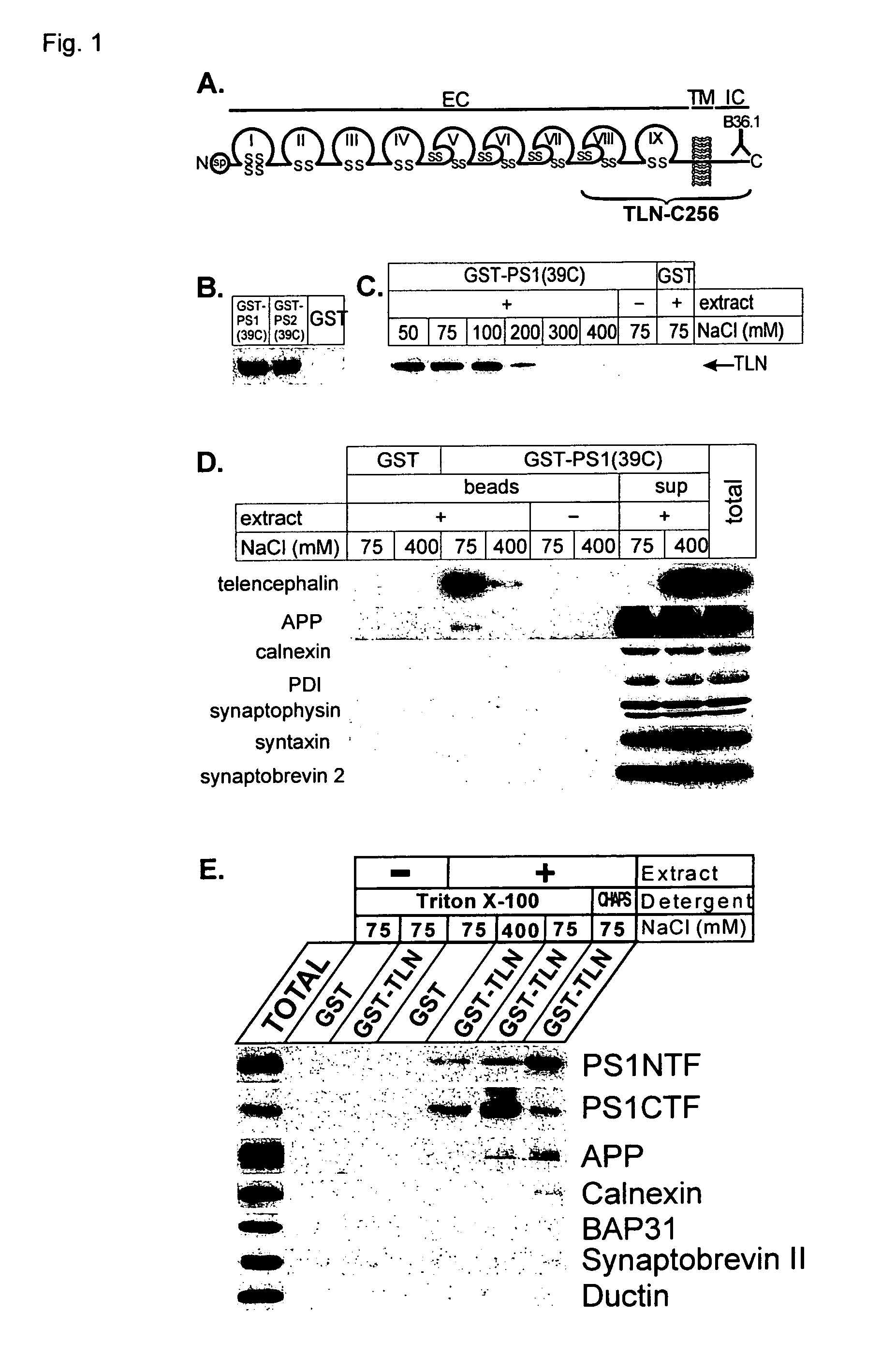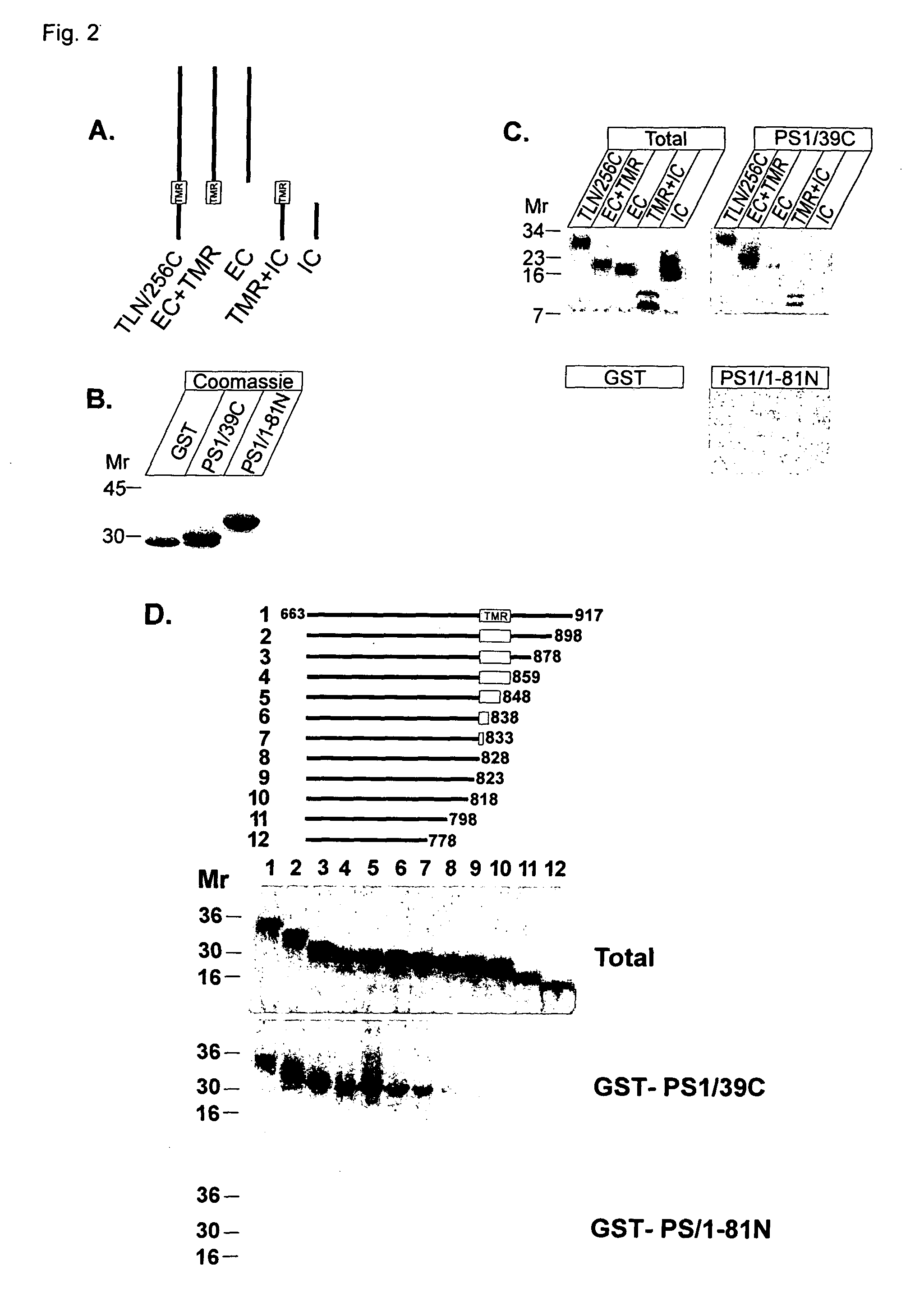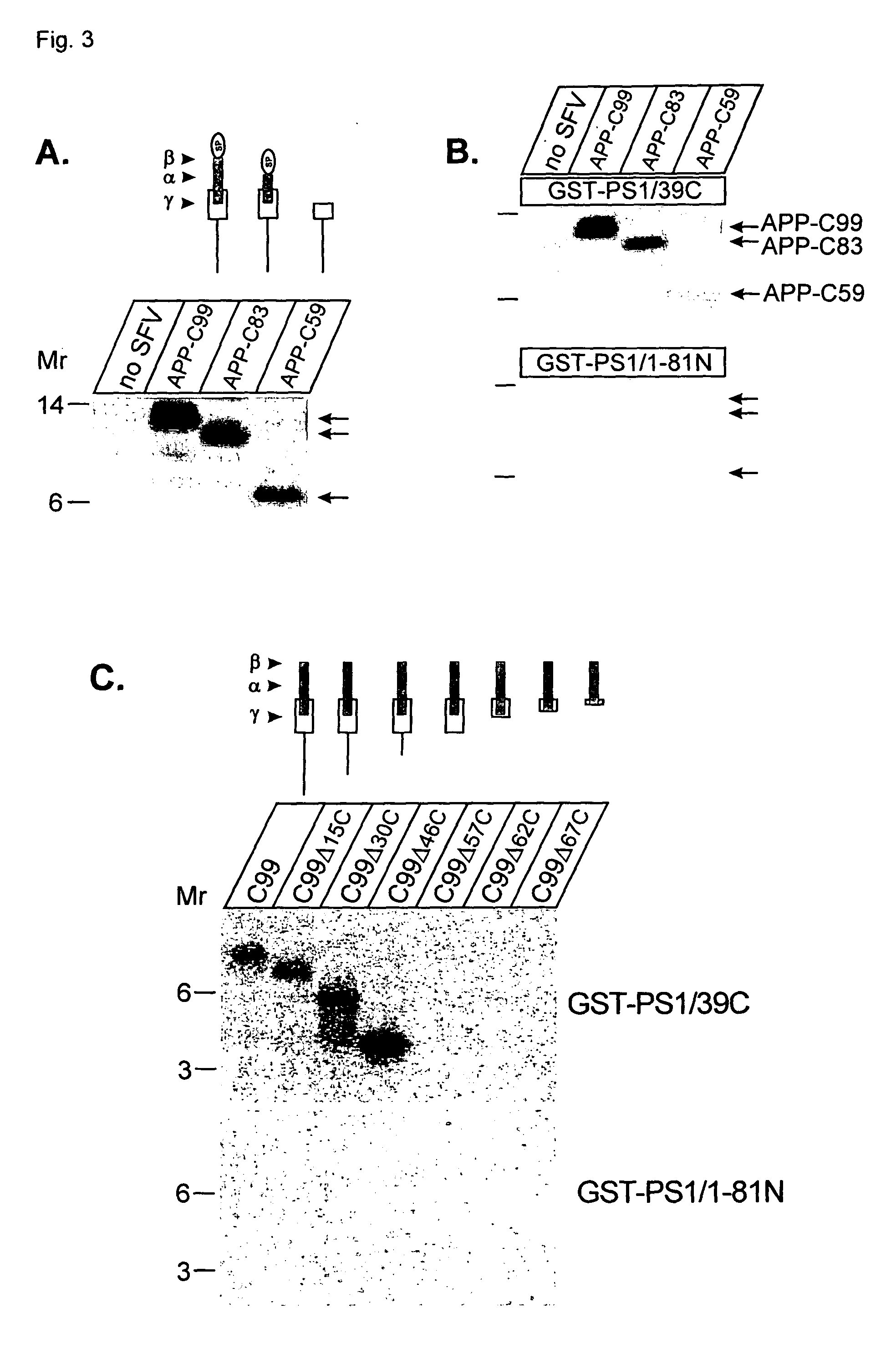[0023]The
peptidomimetic of this invention are preferably substantially similar in both three-dimensional shape and
biological activity to the peptides set forth above. Substantial similarity means that the geometric relationship of groups in the
peptide that react with for example a type I
transmembrane protein is preserved. There are clear advantages for using a mimetic of a given
peptide rather than the
peptide itself, because peptides commonly exhibit two undesirable properties: (1) poor
bioavailability; and (2)
short duration of action.
Peptide mimetics offer an obvious
route around these two major obstacles, since the molecules concerned are small enough to be both
orally active and have a long duration of action. There are also considerable
cost savings and improved
patient compliance associated with peptide mimetics, since they can be administered orally compared with parenteral administration for peptides. Furthermore, peptide mimetics are much cheaper to produce than peptides. Finally, there are problems associated with stability, storage and immunoreactivity for peptides that are not experienced with peptide mimetics. The peptides described in the present invention have utility in the development of such small chemical compounds with similar biological activities and therefore with similar therapeutic utilities. The techniques of developing peptidomimetics are conventional. Thus, peptide bonds can be replaced by non-peptide bonds that allow the
peptidomimetic to adopt a similar structure, and therefore
biological activity, to the original peptide. Further modifications may also be made by replacing
chemical groups of the amino acids with other
chemical groups of similar structure. The development of peptidomimetics may be aided by determining the
tertiary structure of the original peptide, either free or bound to a substrate, e.g.,
presenilin or a transmembrane part of a type I
transmembrane protein, by NMR
spectroscopy,
crystallography and / or computer-aided
molecular modelling. These techniques aid in the development of novel compositions of higher
potency and / or greater
bioavailability and / or greater stability than the original peptide (Dean (1994), BioEssays, 16: 683–687; Cohen and Shatzmiller (1993), J. Mol. Graph., 11: 166–173; Wiley and Rich (1993), Med. Res. Rev., 13: 327–384; Moore (1994), Trends Pharmacol. Sci., 15: 124–129; Hruby (1993), Biopolymers, 33: 1073–1082; Bugg et al. (1993), Sci. Am., 269: 92–98, all incorporated herein by reference). Once a potential
peptidomimetic compound is identified, it may be synthesized and assayed using the method described herein to assess its activity. Thus, through use of the methods described above, the present invention provides compounds exhibiting enhanced therapeutic activity in comparison to the peptides described above. The peptidomimetic compounds obtained by the above methods, having the
biological activity of the above named peptides and similar three-dimensional structure, are encompassed by this invention. It will be readily apparent to one skilled in the art that a peptidomimetic may be generated from any of the modified peptides described in the previous section or from
a peptide bearing more than one of the modifications described from the previous section. It will furthermore be apparent that the peptidomimetics of this invention can be further used for the development of even more potent non-peptidic compounds, in addition to their utility as therapeutic compounds.
[0027]In another embodiment, one or more compounds identified in the present invention may be used to modulate turnover of type I transmembrane proteins. Indeed, the data of the present invention, together with previous investigations, put presenilins at the crossroads of several important signaling pathways involving TLN, Notch, APP,
Cadherin and β-
catenin / Wnt. However, this invention not only shows a function of presenilins at the level of regulated intramembrane
proteolysis but also points towards an additional role of presenilins on the control of the overall turnover of type I transmembrane proteins that interact with presenilins. In the present invention it is shown that the
presenilin controls the turnover of telencephalin. It has been shown that TLN promotes dendritic outgrowth (Tamada et al., 1998; Tian et al., 2000) and contributes to long-term potentiation (Nakamura et al., 2001; Sakurai et al., 1998). Also a downregulation of TLN has been observed in the brains of AD-patients (Hino et al., 1997). Therefore, the present invention provides a way to modulate the turn-over of type I transmembrane proteins such as telencephalin, being a substrate for
presenilin. The possibility to interfere is important for the treatment of Alzheimer's
disease and / or to modulate
memory formation.
 Login to View More
Login to View More 


